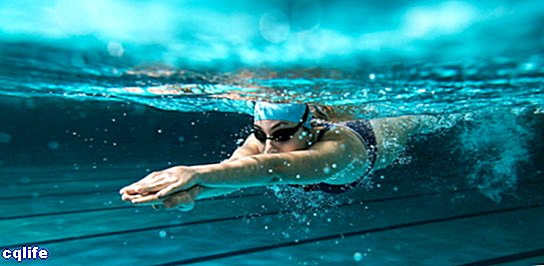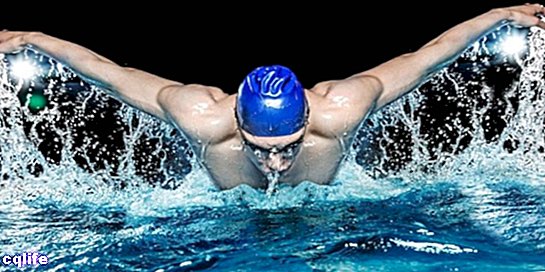We explain everything about swimming, its history, the styles that can be practiced and its health benefits.

What is swimming?
Swimming is the recreational or sports practice of the movement Y displacement on the water, using only the arms and legs of the human body. Is a technique, also, that is learned as method survival (in fact, it is taught in many educational curricula), and is practiced as an exercise given its many benefits to the body.
Its practice can be competitive or purely recreational. What sport formal is one of the most practiced in the world, included in the Olympic disciplines and carried out in pools of different length (50, 100, 200, 400, 800 and 1500 meters). Specific swimming techniques are known as styles and they have particular names.
Swimming exercise is possible since the human body is slightly less dense than water, so it always tends to float. Our relationship with him Water It is very particular, despite being terrestrial beings, since at birth we are extracted from a totally submerged environment such as the maternal womb.
In fact, babies show an innate tendency to swimming and certain diving reflexes, such as automatic containment of the breathing, decreased heart rate and reduced circulation to the extremities (it is the immersion reflex mammal).
Swimming history
Swimming has been practiced since time immemorial, and there is evidence of its knowledge in paintings more than 7,000 years old. It is also mentioned in texts from later times, such as 2,000 BC. C .: the Odyssey, the Iliad, the Bible, etc.
However, the first book on swimming was written in 1538 and is credited to Nikolaus Wynmann, a German professor of languages: The swimmer or a dialogue in the art of swimming.
Importance of swimming
Swimming is much more than a sports practice, it is also a skill and a technique that on many occasions can represent the difference between the life and the death. A good swimmer is more likely to survive certain accidents at sea, or falls overboard from boats (if he is conscious and in full power).
On the other hand, swimming is one of the most popular sports practices in the world. It brings a large number of benefits to respiratory system Y circulatory of human being, as discussed below.
Swimming styles

There are numerous styles of swimming, some custom or little used, but generally there are four main styles, which are distinguished in competitions and they are endorsed by the International Swimming Federation:
- Chest or breaststroke style. Also known as "frog style", as the human body resembles in movements that of certain amphibians, consists of floating face down with the arms pointing to the front and the legs slightly bent. Head stays out of the water to take air and then the arms move in a circle under the water, propelling the body forward as the movement is imitated with the feet, shrinking and stretching them at the same rate.
- Front crawl or freestyle. This style requires the swimmer to be straight, lying on one arm that plunges straight into the water, while the other emerges with the elbow flexed and the palm extended down, ready to enter the water. Head pops sideways to take air, which is expelled when the torso dips and turns to repeat the movement but with the other arm. Meanwhile, the legs move, relaxed, with the toes pointed and the feet inwards, giving oscillating kicks.
- Back or back style. A style essentially similar to the crawl, but face up, with the back submerged in the water, moving one arm in the air with the palm of the hand coming out from under the leg, while the other propels the body in the water.
- Butterfly style. A variation of the breaststroke or breaststroke style, in which both arms move forward and back together under the water, propelling the torso forward, continuously and accompanied by an undulating movement of the hips, which dips the head when entering into the water and culminates with a kick called "dolphin" because of its similarity to the swimming of these animals, using the feet together.
Health benefits
Swimming has both physical and psychological benefits for health, since it is one of the most complete sports practices known, strengthening the musculature almost complete of the body and stimulating coordination mental and memory. It is known that the usual practice of swimming as a sport aerobic help with:
- Lowering blood pressure and burning fats, since the body must lose twice as much calories to stay hot: for the exercise carried out and for being submerged in a colder liquid.
- Improves and strengthens the system cardiac and vascular, since it subjects the heart to a continuous and coordinated work with breathing, also increasing the athlete's lung capacity.
- Relaxes the muscles by mobilizing almost all the muscles of the body in a coordinated way, without fixed positions for too long.
- As it lacks impact like land sports, it allows to strengthen the muscles without subjecting it to the stress of the gravity.
